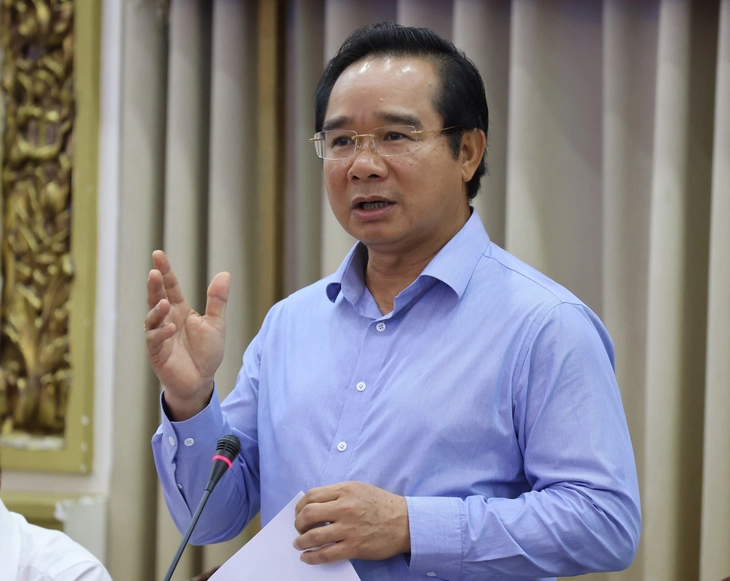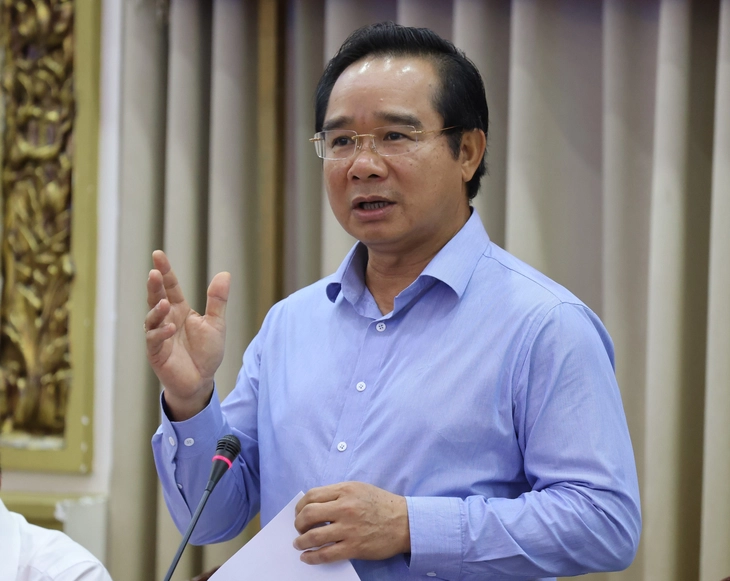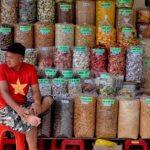Chairman of the Ho Chi Minh City People’s Committee Nguyen Van Duoc stated that the city’s leadership strongly supports Vietnamese enterprises registering to participate in the urban railway system. Currently, many businesses and corporations are showing interest and registering to operate in the metro.

On the morning of June 3, the Ho Chi Minh City People’s Committee held a meeting to assess the socio-economic situation in May and the first five months of the year, outlining upcoming tasks and solutions.
In his closing remarks, Chairman Nguyen Van Duoc noted that in the first five months, the city’s economy and society experienced both advantages and challenges. Nevertheless, Ho Chi Minh City achieved many positive developments.
However, he also pointed out numerous limitations. Specifically, budget disbursement in the first five months reached only slightly over 10%, despite the city’s leaders making many decisive decisions.
He instructed the compilation of a list of key projects using large funding sources and the setting of state investment disbursement targets for each unit, locality, and project.
«Certainly, in the second quarter, state investment disbursement must reach 30%; any unit failing to meet this target will be held accountable,» emphasized Mr. Duoc.
He noted that in the near future, Ho Chi Minh City’s leadership will manage based on performance and results. If officials fail to perform, they will be replaced; the city has already reassigned some department heads.
Many Investment Procedures Are Overly Rigorous and Redundant
Additionally, although businesses have started paying attention to Ho Chi Minh City’s market and returning, many are still leaving. This indicates that administrative reforms still face many issues, with processes being overly cumbersome and complex. He believes departments must decisively eliminate inconveniences for businesses, especially in critical areas like finance and construction.
«Currently, some procedures are too restrictive and redundant. Many places fear businesses might exploit them, leading to unnecessary regulations and a negative mindset,» said Mr. Duoc.
Discussing upcoming tasks and solutions, the Chairman noted that the central government issued a «framework set» with four Politburo resolutions: 57, 59, 66, and 68.
These resolutions are important strategies to create new momentum for the country’s growth. Mr. Duoc suggested departments promptly advise the Ho Chi Minh City People’s Committee on their implementation.
In the future, Ho Chi Minh City will eliminate districts and merge provinces, requiring each department and unit to actively coordinate with neighboring provinces to develop reorganization plans.
Moreover, the Ho Chi Minh City Research and Development Institute will collaborate with consulting units to revise the city’s new layout based on approved provincial plans, updating additional sub-regions and new functions.
In the new Ho Chi Minh City, functions will be allocated as follows: Binh Duong will become an industrial center; Ba Ria — Vung Tau will focus on maritime tourism, ports, and marine services; while Ho Chi Minh City will be the center of finance and advanced technology.
The Chairman also instructed the Finance Department to immediately implement a plan for managing and reorganizing state assets after restructuring the apparatus. District units are prioritized in constructing educational and medical facilities.
Convert Public Investment into Private
Regarding funding, Mr. Duoc stated that Ho Chi Minh City will implement a plan to diversify capital sources, converting public investment into private to reduce budget pressure. The city will also restructure the Urban Railway Management into a company model.
The idea is to create a major Vietnamese corporation in Ho Chi Minh City to form Vietnamese chaebols, said Mr. Duoc.
According to Mr. Duoc, the city leadership strongly supports Vietnamese enterprises registering for the Ho Chi Minh City railway system.
Additionally, he noted that currently, besides Vingroup, Gamuda Group, and Ms. Nguyen Thi Phuong Thao’s Vietjet, other companies have shown interest and registered to build metro lines, such as from the city center to the airport or Metro Line No. 2.
«We are fortunate that Vietnamese investors, with Vietnamese hearts, blood, and dedication to this land, have registered for these projects. Building railways is not easy—spending billions while earning modest returns—yet they still want to register. Why shouldn’t we encourage them?»






